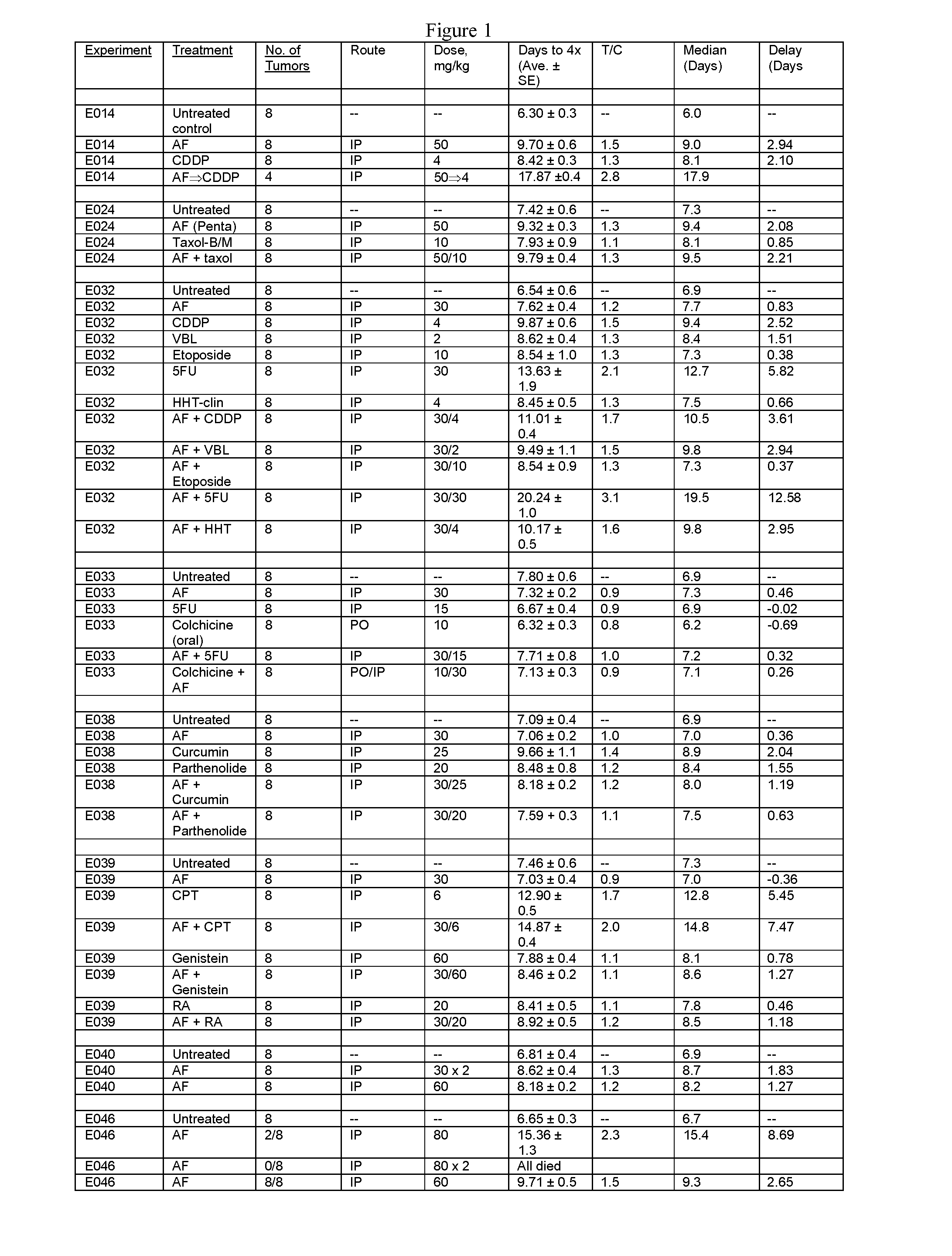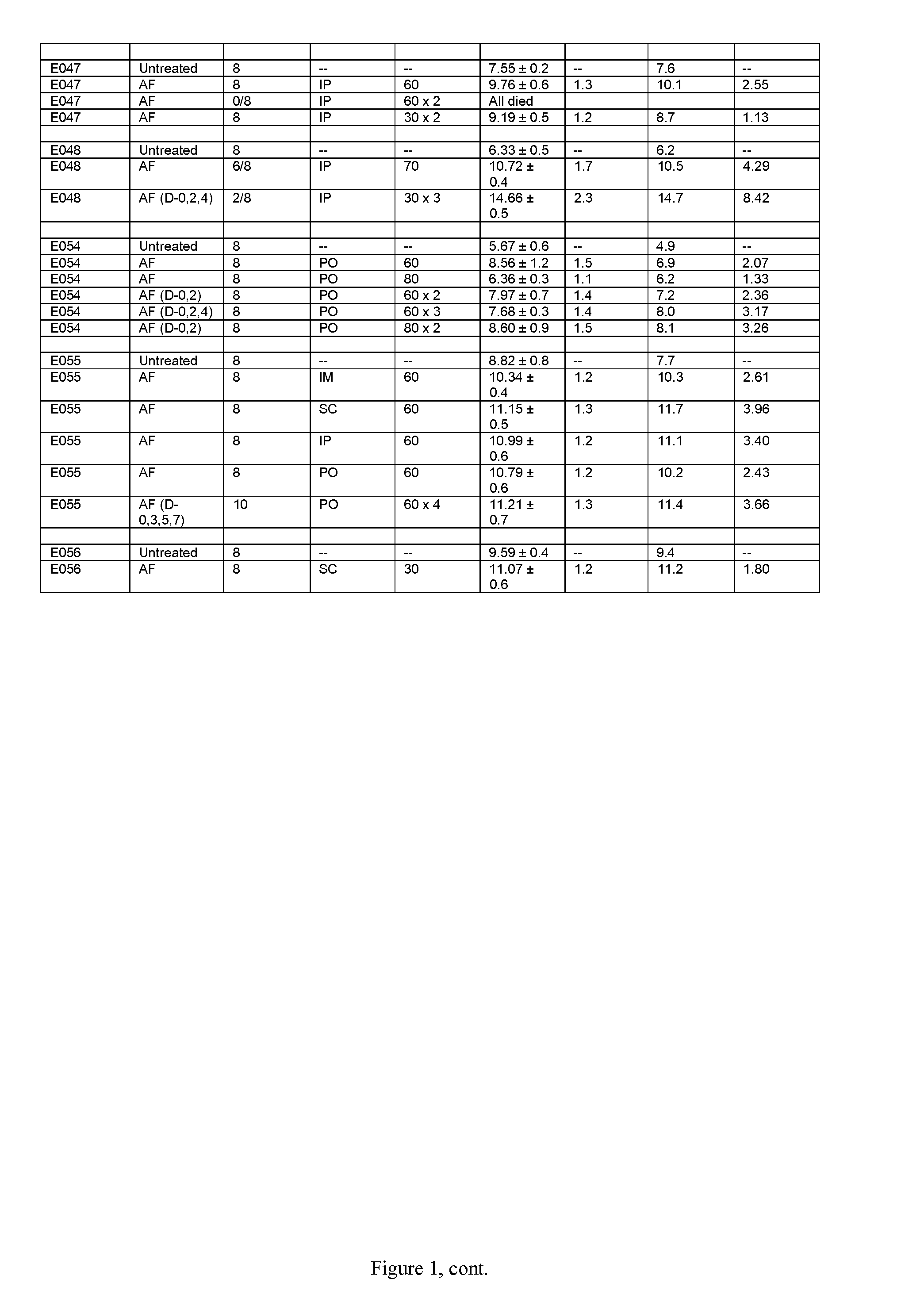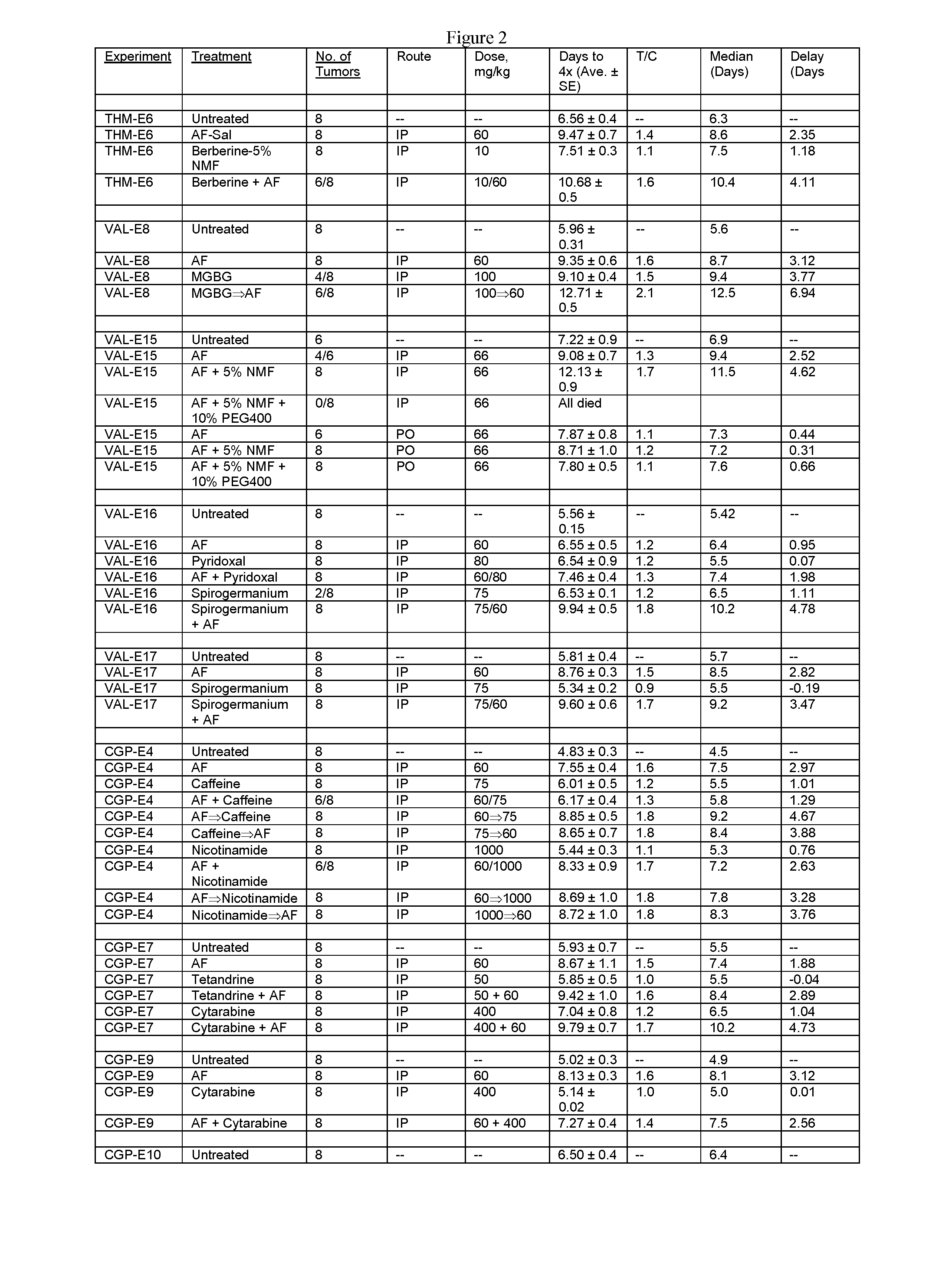Compositions and methods to improve the therapeutic benefit of suboptimally administered chemical compounds including substituted naphthalimides such as amonafide for the treatment of immunological, metabolic, infectious, and benign or neoplastic hyperproliferative disease conditions
a technology of suboptimally administered chemical compounds and substituted naphthalimides, which is applied in the field of treatment of immunological, metabolic, infectious, benign or neoplastic hyperproliferative disease conditions, can solve the problems of in vitro and in vivo clinical trials of chemical agents, failure or disappointment of compounds that have successfully met preclinical testing and federal regulatory requirements for clinical evaluation, and the rational and successful discovery of useful therapies for life-threatening diseases. achieve the effect of improving the utility
- Summary
- Abstract
- Description
- Claims
- Application Information
AI Technical Summary
Benefits of technology
Problems solved by technology
Method used
Image
Examples
example 1
Use of Amonafide in Combination with Other Anti-Neoplastic Drugs
[1359]Tables 1 and 2, shown in FIGS. 1 and 2, respectively, show the use of amonafide, alone or in combination with another anti-neoplastic drug, in a tumor model in mice as described below
[1360]Female C3H mice (Charles River Laboratories, Hollister, Calif.), approximately 3 months old, were used for the study. The average body weight was approximately 25 g. Animals were maintained in isolator cages on a 12-hour light-and-dark cycle. Food and water were available ad libitum. The RIF-1 murine fibrosarcoma cell line was maintained in in vitro culture (Waymouth medium supplemented with 20% fetal bovine serum) at 37° C. in a humidified 5% CO2 incubator. Log-phase RIF-1 cells were trypsinized and harvested from cell culture flasks to yield a concentration of 4×106 cells / mL, then injected intradermally in a volume of 50 μL (equivalent to 2×105 cells per injection) into both flanks of each mouse. Nine days later, when tumors r...
PUM
 Login to View More
Login to View More Abstract
Description
Claims
Application Information
 Login to View More
Login to View More - R&D
- Intellectual Property
- Life Sciences
- Materials
- Tech Scout
- Unparalleled Data Quality
- Higher Quality Content
- 60% Fewer Hallucinations
Browse by: Latest US Patents, China's latest patents, Technical Efficacy Thesaurus, Application Domain, Technology Topic, Popular Technical Reports.
© 2025 PatSnap. All rights reserved.Legal|Privacy policy|Modern Slavery Act Transparency Statement|Sitemap|About US| Contact US: help@patsnap.com



